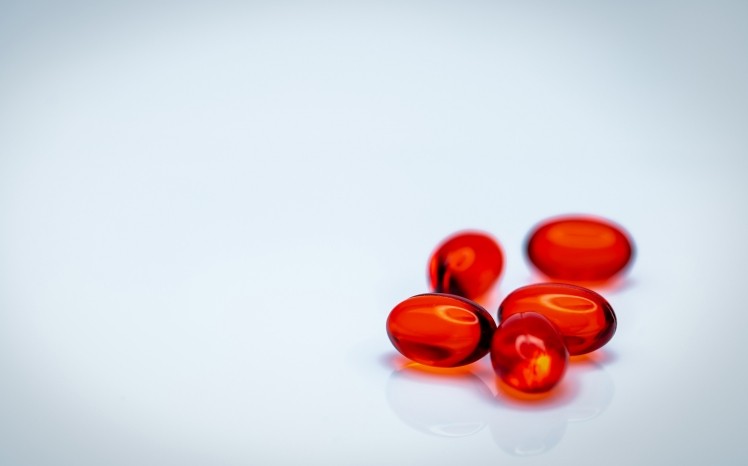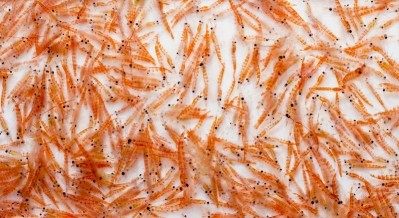‘Is your krill backed by science and substantiated?’, consumers ask Aker BioMarine

Aker BioMarine’s chain stretches from sustainable krill harvesting in Antarctic waters through its Montevideo logistics hub, Houston production plant, and all the way to customers.
The company, which was established as an independent enterprise in 2006, focuses on the prevention of lifestyle diseases, better resource utilization, industry responsibility, Antarctic ecosystem research and science to help improve human and planetary health.
1. What are people's top questions and needs when they come to Aker BioMarine for krill nutrients?
Gian Franco Guerrieri: Some of the major key questions today revolve around sustainability, traceability and quality. We encourage those looking for krill ingredients to ask:
- Is your krill backed by science and substantiated?
- Where is your ingredient coming from?
- Is your ingredient certified by any third parties that validate quality, traceability, etc.?
In addition to ensuring a quality product, our customers are also coming to us for partnerships and collaboration.
2. What are the leading trends influencing krill nutritional development?
GFG: There is no question that science will continue to reign with products in the krill oil market today. In order to help satisfy that need, the science team at Aker BioMarine is continuing to venture into new territories to continue uncovering the potential of krill oil.
The team recently looked at krill oil and choline and found that krill oil is a safe, effective and well-tolerated way to boost your necessary intake levels of choline, and it does not contribute to high plasma levels of TMAO.
As product innovation continues to evolve, companies like Aker BioMarine will need to continue to invest in clinical research to help substantiate product claims and efficacy.
3. What is the Latin American market demanding from nutrients?
According to recent market data forecasts, the Latin American nutraceutical ingredients market is projected to register a lucrative growth by 2021. The Latin American nutraceutical ingredients market is driven by the increased demand for nutraceutical ingredients due to the increasing awareness among consumers regarding a healthy diet including nutraceutical ingredients.
An increase in the incidences of chronic diseases and the rise in the geriatric population is the key factor boosting the demand for the nutraceutical ingredient.
Latin America has always been a supplier of raw materials, mainly commodities worldwide. Nutraceutical imports, especially from Europe or the US are viewed as higher quality than domestic products, as there is the perception that these markets have stricter quality controls. In some cases, this is true while in others, local sanitary authorities are quite strict.
Local consumers are highly interested in products intended for general wellbeing and health benefits, and krill oil is a highly sought after solution. Consumers in Latin America are also interested in making sure that their krill comes from a sustainable source.
4. How important is a diet rich in omega-3 nutrition Omega-3?
There is no question that omega-3s (specifically EPA and DHA) are important for our health. Omega-3s help maintain and support many functions in the body including the heart, brain, joints, liver, skin and more. We need omega-3s at every stage of life, but since our bodies cannot make them on their own, we need to obtain them from our diet.
The best way to get the adequate amount of EPA and DHA is in the form of "oily" fish, but if you aren’t eating enough fish, supplementing with a marine-based omega-3 that contains EPA and DHA will also help you to efficiently raise your omega-3 levels.
There are many omega-3 choices on the market, but not all are created equally. In fact, there are some important differences between various sources and how they are delivered in the body. Krill oil provides EPA and DHA mainly in the form of phospholipids. Since phospholipids are structurally different from omega-3 triglycerides, this difference dictates how EPA and DHA enter into the body.
5. What are the main opportunities in the krill nutrition ingredient space?
There is definitely great potential for growth and innovation in the krill nutrition ingredient space in years to come. At Aker BioMarine, we are continually looking at unique delivery systems, emulsified liquids, gummies and all other collaborative combinations with complimentary branded raw material suppliers.
The krill oil market is also hitting new heights with technology and innovation. At Aker BioMarine, we believe that innovation and technology will help to solve some of the industry’s toughest challenges moving forward.
Finally, it is important to reflect on the reasons why krill oil is unique and what brought consumers to the category in the first place⎯usage and compliance. Krill oil is a great go-to option, over omega-3 options, as capsules are small and easy to swallow. Also with krill oil, you won’t encounter issues with smell, aftertaste and reflux.
6. What are the main challenges when sourcing and distributing krill nutrients in particular?
Today’s consumers are savvy, especially when it comes to sustainability and traceability. They want to know where their products are coming from and are holding companies accountable for their actions. This global demand for environmentally-friendly products has helped steer the supplements market into a more positive direction.
7. What exciting plans do you have?
With a growing population, we need to make healthy food and nutrients available to everyone, but we also need to keep our planet’s ecosystem healthy. As a unique and diverse system, the ocean plays a critical role in the world’s future. Creating long-term worth and success in a global fishery requires a business approach that values both opportunity and responsibility. Aker BioMarine is continuing to invest in projects that speak to this in 2020 and beyond.
Technology and big data are driving forces in the future of sustainable fisheries management, and Aker BioMarine is using these areas to help positively guide the business. By aligning technology and big data to its sustainability efforts, Aker BioMarine is aiming to reduce its industrial footprint while strengthening its positive handprint.
One project, in particular, is a new unmanned solar-powered ocean data drone (Sailbuoy) that Aker BioMarine has launched as part of the company’s operations in Antarctica. The goal is to take a bigger step in data collection in a new data-driven era of sustainable fishery management.
The new two-meter long ocean data drone (called the Sailbuoy) is equipped with echosounder and environmental sensors to collect, process and transmit density and distribution data from wherever it is deployed, in real-time. Easy to operate, launch and recover, the unique ocean drone uses wind for propulsion and is powered by solar panels, which charge the internal batteries. Built to be robust and to survive the tough Antarctic conditions, it was also designed to be small and unobtrusive to avoid disturbing the local wildlife.
The Sailbuoy will help minimize the need for fishing vessels to spend time and resources looking for krill, significantly reducing financial and environmental costs. All the data collection carried out by the drone has a carbon footprint of zero. The Sailbuoy can provide a more accurate picture of the size of the biomass, benefiting the wider scientific community and the krill fishery as a whole.






